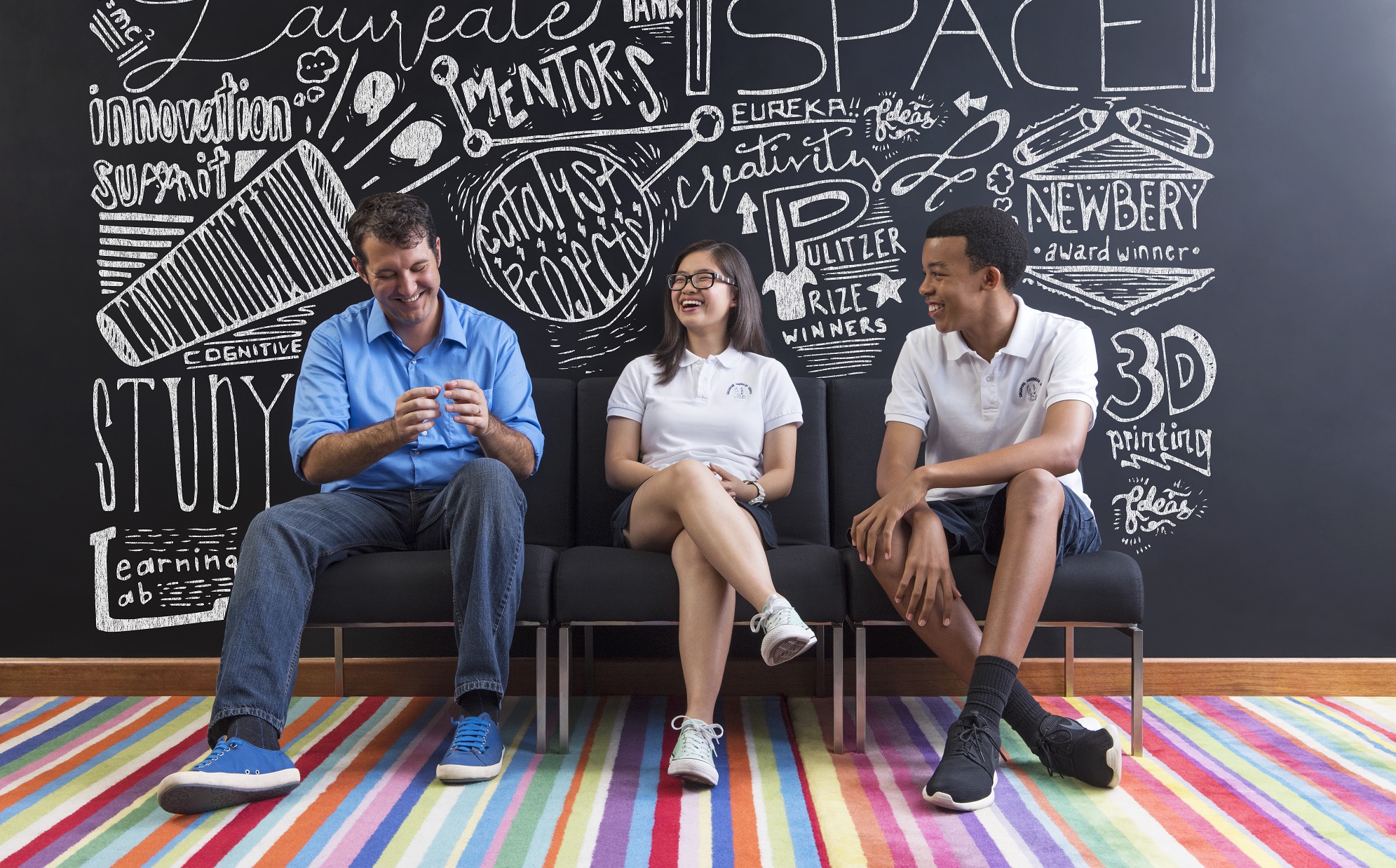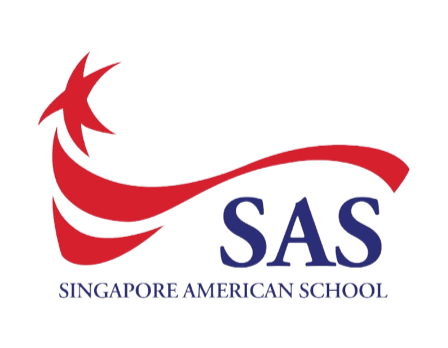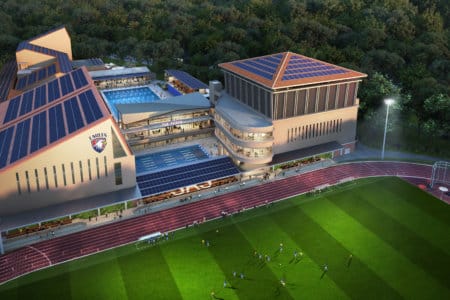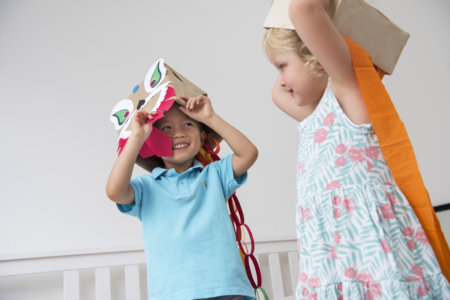“My whole life, I’ve wanted to go out and do my own thing, to say to a teacher: you know, I get this, this is important, but can we apply it to something?” said Jesse Atlas. Singapore American School (SAS) listened, and enabled him and his fellow high school students to fulfill their passions in a culture of excellence, possibilities, and extraordinary care.
For high school students Zane Mountcastle and Jesse Atlas, the idea of a culture of possibilities was so intrinsic to their SAS experience that it led them to establish Project Nirmala—a campaign designed to help break the poverty cycle for over 300 million women and their families across South Asia.
Such an ambitious task may seem beyond the range of the average high school student, but when Zane and Jesse read that poor menstrual hygiene forced up to 23 percent of girls to drop out of school in the region, they were inspired to help fix the problem as part of the Catalyst project at SAS.
“We took all these components [of menstrual hygiene products] and said, ‘How can we emulate these things? How can we make something that’s really similar but really cheap?’ Taking these and reverse-engineering them into something we had wanted to create with different materials, different sizes, and shapes was a really cool skill, and thinking critically was a really good thing to put into use,” said Jesse.

“The purpose of this semester’s extended project was to do everything from branding to distribution to marketing, everything that has to do with setting up an NGO. What was really beneficial about having a day-on, day-off schedule is that we had a full day to meet people and go off campus. For example, we met pro-bono lawyers from the Singapore Law Society and talked about the founding of an NGO in Singapore,” said Zane. Jesse added, “And this was that application that I’d wanted and I think Zane had wanted for a long time, and the first opportunity we got to do that.”
Project Nirmala is just one example of how SAS students excel, and how the institution takes the education experience to a whole new level. The American-based curriculum is designed to offer pathways to learn at the highest levels and encourage students to apply their knowledge in the real world, using the breadth and depth of the activities on offer.
A culture of excellence
To put it succinctly, the SAS educational program is one of the world’s finest. But just this sweeping declaration alone is insufficient; the results, and student success stories like Zane’s and Jesse’s, are better proof of that.
SAS students excel and perform better than the average at most schools around the world. Statistics by Advanced Placement exams for high school, the Programme for International Student Achievement (PISA) for 15-year-olds, and Measures of Academic Progress for third through ninth graders, consistently demonstrate just how well SAS students perform.
SAS students have all kinds of opportunities for excellence and growth with custom college-level advanced topic courses, AP programs, semesters abroad, entrepreneurships and other opportunities for independent learning such as through extra-curricular activities that include everything from sports, music, and dance to social and environmental outreach.
Graduates also regularly continue their education at top universities in the United States and abroad at places such as Brown University, New York University, King’s College London, University of Southern California, and the University of Michigan.
A culture of extraordinary care
SAS’s culture of extraordinary care is thanks in part to its sound teacher-student ratios that ensure quality education and a high level of individual care. In preschool and pre-kindergarten, the ratio is 16:1 or less, while in kindergarten through grade 12, the average ratio is 22:1.
Staff are also chosen for their excellence and are considered one of the school’s strengths. Nearly 75 percent hold master’s degrees or higher and come mostly from the US, Canada, Australia, New Zealand, and Singapore.
On average, they have a seven-year tenure and are actively involved in the school, taking on roles like coaching sports teams, coaching debaterunning after-school activities, and engaging in extracurricular community activities.
A culture of possibilities
Built from the ground up, SAS’s tale of success started with a culture of possibilities. It was established in 1956 before even Singapore became independent, and became one of Asia’s first international schools and one of Singapore’s few non-profit schools. At the time, it sought to offer expatriate families a high-level education their children would thrive in, and today, 60 years later, the American-based curriculum for preschool through grade 12 is now tried and true.
Students are encouraged within the American ideal to explore, take risks, be innovative, creative, and to pursue excellence. Faculty and staff nurture this growth mindset and risk-taking in student learning and ultimately it is this that sets SAS apart.
A lot of learning at SAS is project-based, aimed at getting students to learn and progress at their own pace to develop skills that they can take into any career they choose. It is through this model of learning that Zane and Jesse were inspired to make a difference in rural women’s lives.
And they aren’t the only high achievers that SAS has proudly educated.
Through her education at SAS, Bianca Antonio found that her love of advanced mathematics and progressive art could combine in a structural engineering class. After joining the Gawad Kalinga service club to help build homes in the Philippines, Bianca also realised how structures could change lives and has continued her interest in structural engineering at Brown University.
Similarly, Devon Reagan’s love of riding horses turned into an academic passion at SAS through the Catalyst Project that helped her get certified by the British Horse Society. She also volunteered with Riding for the Disabled Association of Singapore and studied therapeutic horse riding for children with special needs. Devon is now studying Equine Science at Colorado State University.
Science fiction writer Arthur C. Clarke wrote, “The limits of the possible can only be defined by going beyond them into the impossible.” Within a culture of possibilities, like at SAS, students are continually encouraged to achieve dreams they have yet to dream of, and believe that nothing is impossible in the pursuit of excellence.

Singapore American School (SAS) is a non-profit, independent, co-educational day school offering an American-based curriculum for students from preschool through to high school. It is one of Singapore’s first international schools and the largest American curriculum school outside the United States.
Students come from around 50 different countries, with 60 percent holding US passports. Twenty-three different nationalities are represented amongst the staff, and the majority are Americans holding master’s or doctorate degrees. For more information, visit www.sas.edu.sg.
All images courtesy of Singapore American School
Liked this? Then you’ll love these…
Inspiring locations for secondary education: Asia
Singapore universities claim Top 2 spots in THE’s 2016 Asia rankings















